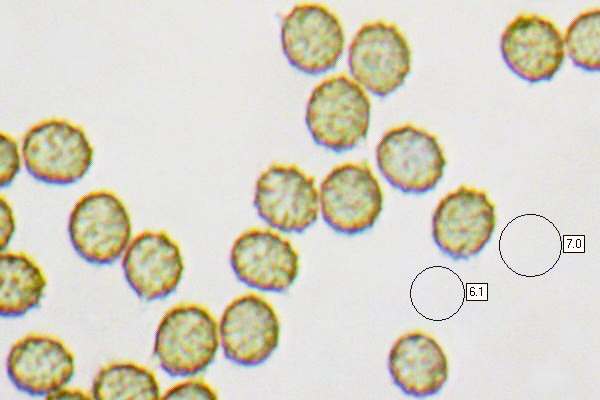Russula queletii Fr. - Fruity Brittlegill
Phylum: Basidiomycota - Class: Agaricomycetes - Order: Russulales - Family: Russulaceae
Distribution - Taxonomic History - Etymology - Identification - Culinary Notes - Reference Sources
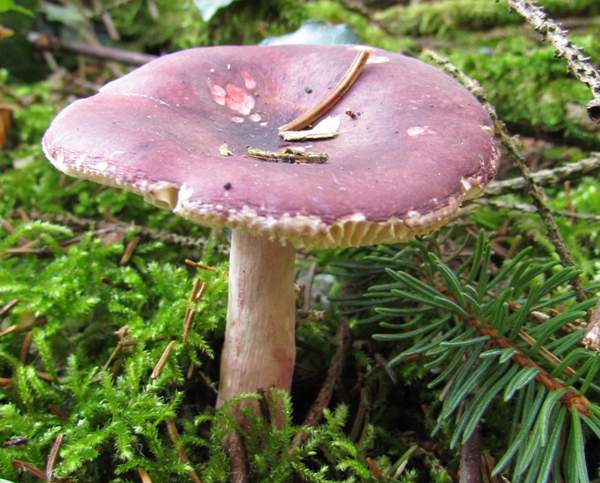
Russula queletii, the Fruity Brittlegill, is mycorrhizal with spruce trees (Picea species) and is a fairly common find in the conifer plantations of western Europe. Usually these brittlegills have purplish caps, but older specimens fade to become more of a violet-red colour. The whitish gills distinguish them from the Primrose Brittlegill.
The fruity odour from crushed fruitbodies is reminiscent of gooseberry jam, but if you taste the flesh you will find it surprisingly hot and bitter.
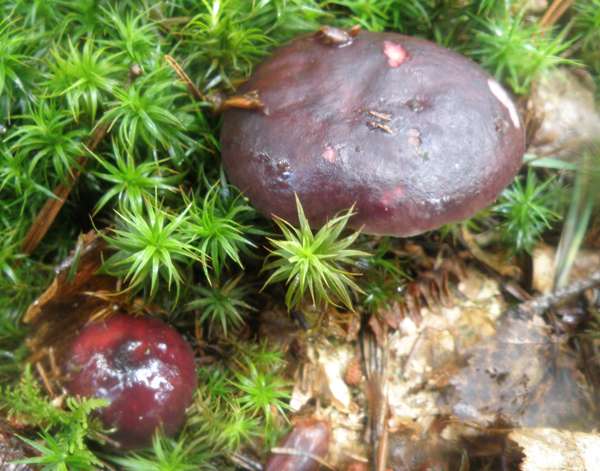
Taxonomic history
The Fruity Brittlegill mushroom was described in 1872 by the great Swedish mycologist Elias Magnus Fries, who gave it its currently-accepted scientific binomial name Russula queletii.
Synonyms of Russula queletii include Russula queletii var. flavovirens (J. Bommer & M. Rousseau) Maire, Russula flavovirens J. Bommer & M. Rousseau, and Russula drimeia var. queletii (Fr.) Rea
In the past this brittlegill was included in a complex of species under the name Russula sardonia, a name now reserved solely for the Primrose Brittlegill. Significantly, the Fruity Brittlegill and the Primrose Brittlegill are very similar in colouring except that Russula sardonia has lemon-yellow gills whereas Russula queletii has creamy-white gills.
Distribution
Found in coniferous woodland that contains spruce trees, Russula queletii occurs throughout Britain and Ireland but is not very common. This brittlegill occurs also also throughout most of mainland Europe, and a species sharing the same scientific name (possibly even the same species) is found in parts of North America.
Etymology
Russula, the generic name, means red or reddish, and indeed many of the brittlegills have red caps (but many more are not, and several of those that are usually red can also occur in a range of other colours!). The specific epithet queletii honours French mycologist Lucien Quélet.
Identification guide
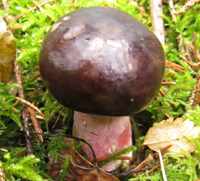 |
Cap3 to 7cm diameter, not noticeably grooved at the margin, the caps are initially convex, then expanding and becoming slightly depressed, often with a slight umbo. The cap flesh white. |
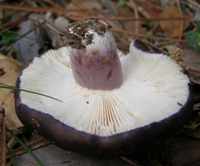 |
GillsThe white or pale cream gills are adnate. Stem3 to 8cm long and 5 to 18mm in diameter, the stems are flushed with the same colour as the cap or somewhat paler. |
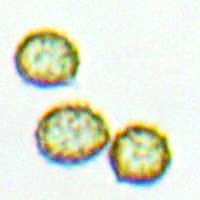 |
SporesEllipsoidal, 7-9 x 6-7.5μm (excluding spines); ornamented with large isolated warts up to 1.2 μm tall but without connecting lines. Spore printCream. |
Odour/taste |
Fruity odour; very hot acrid taste. |
Habitat & Ecological role |
In coniferous woodland nearly always with spruce trees. In common with other members of the Russulaceae, Russula queletii is an ectomycorrhizal mushroom. |
Season |
July to October in Britain and Ireland. |
Similar species |
Russula atropurpurea, the Purple Brittlegill, is larger with a very dark, almost black cap centre and pale cream gills; its stem base is rusty brown. |
Culinary Notes
Despite its fruity odour, this brittlegill has a very bitter taste and is therefore not generally considered edible.
Reference Sources
Pat O'Reilly (2016). Fascinated by Fungi, First Nature Publishing
Geoffrey Kibby (2011).The Genus Russula in Great Britain, published by G Kibby.
Roberto Galli (1996). Le Russule. Edinatura, Milan.
BMS List of English Names for Fungi
Paul M. Kirk, Paul F. Cannon, David W. Minter and J. A. Stalpers. (2008). Dictionary of the Fungi; CABI.
Taxonomic history and synonym information on these pages is drawn from many sources but in particular from the British Mycological Society's GB Checklist of Fungi.
Fascinated by Fungi. Back by popular demand, Pat O'Reilly's best-selling 450-page hardback book is available now. The latest second edition was republished with a sparkling new cover design in September 2022 by Coch-y-Bonddu Books. Full details and copies are available from the publisher's online bookshop...
